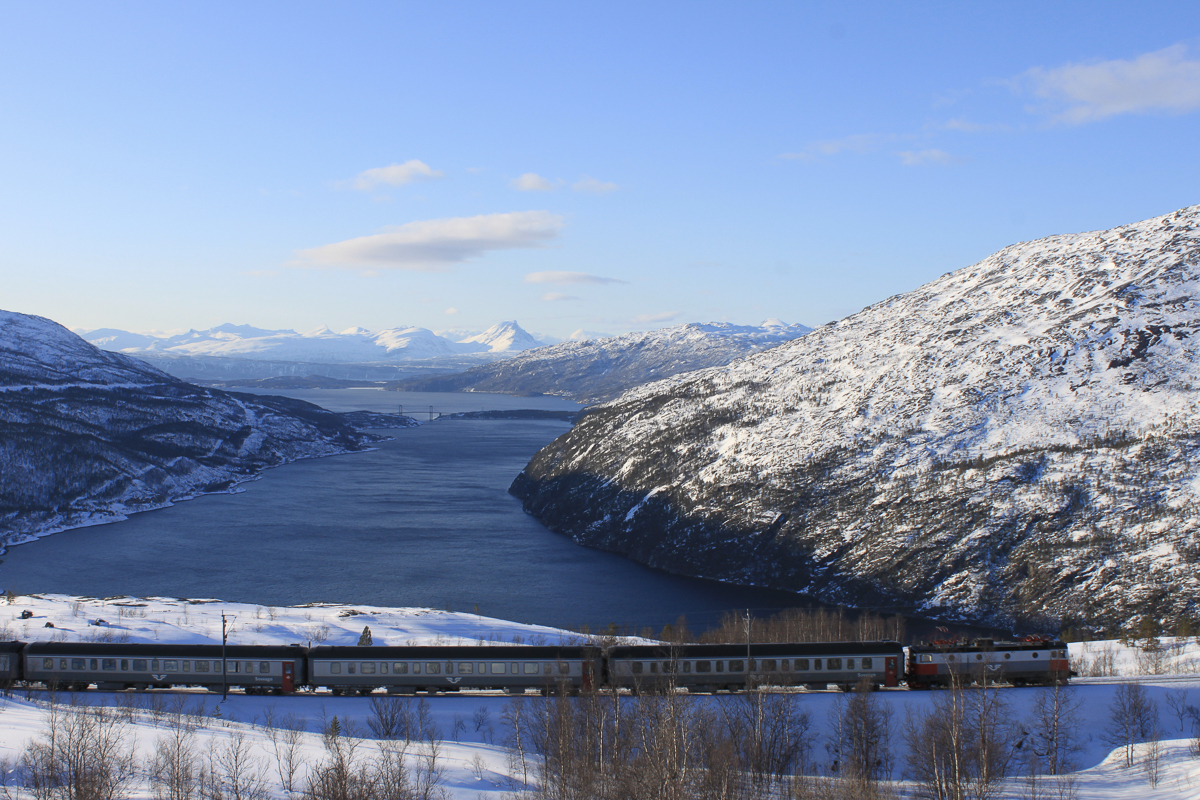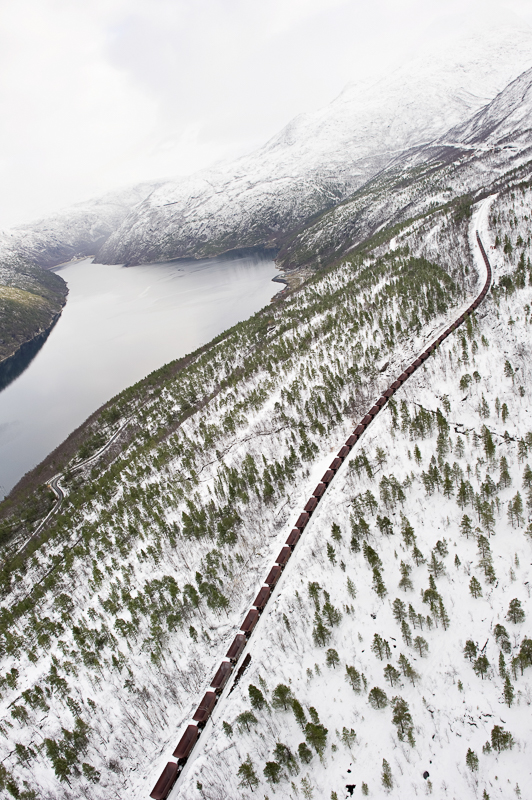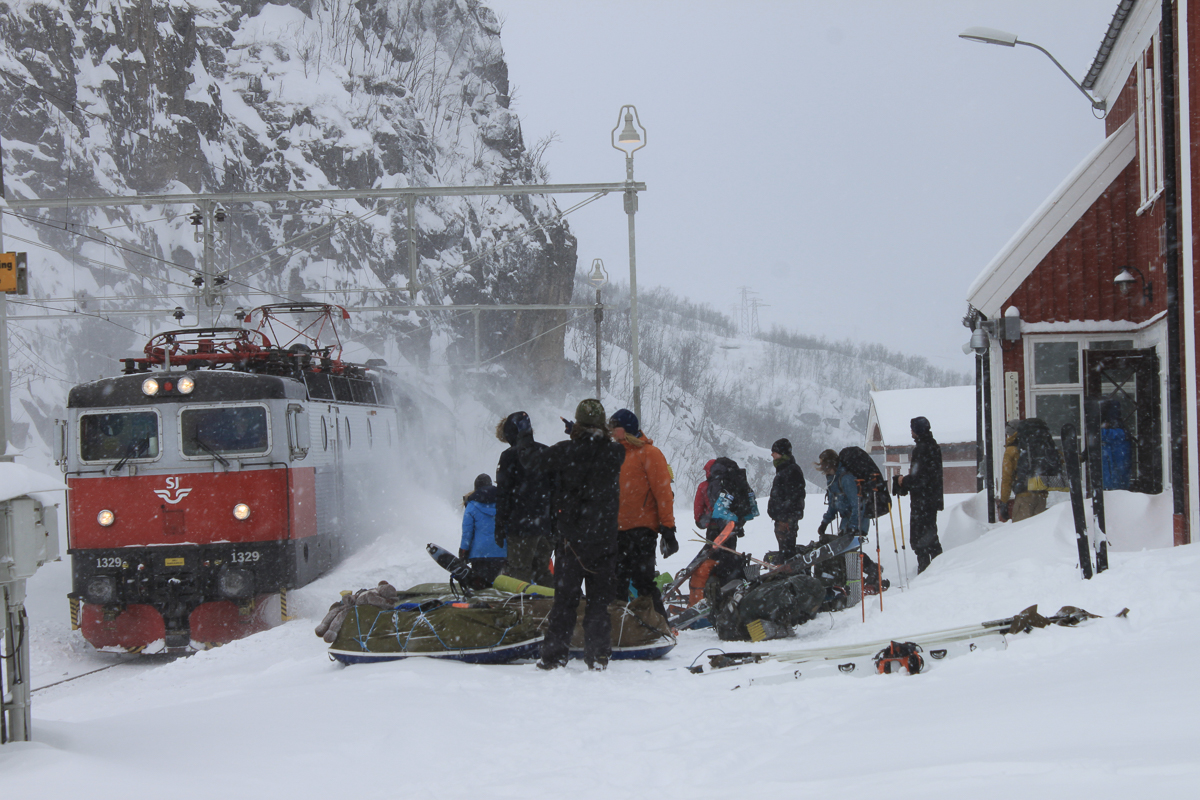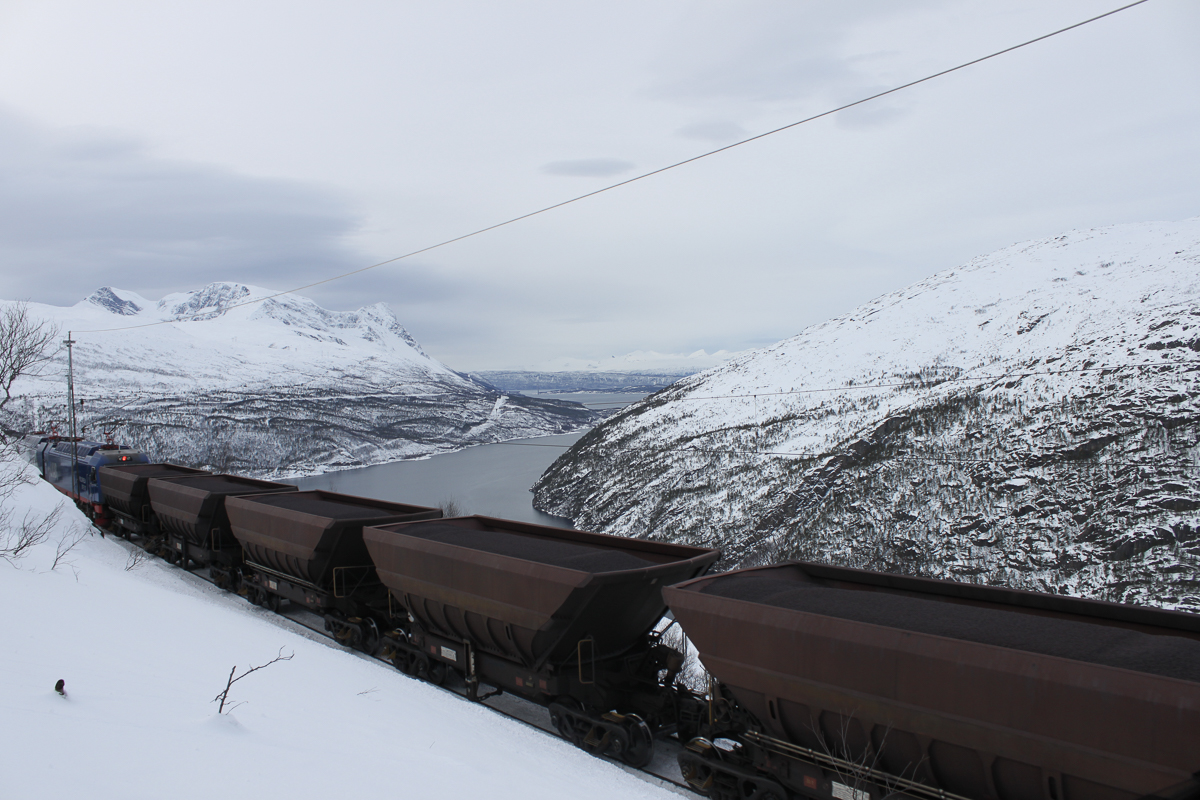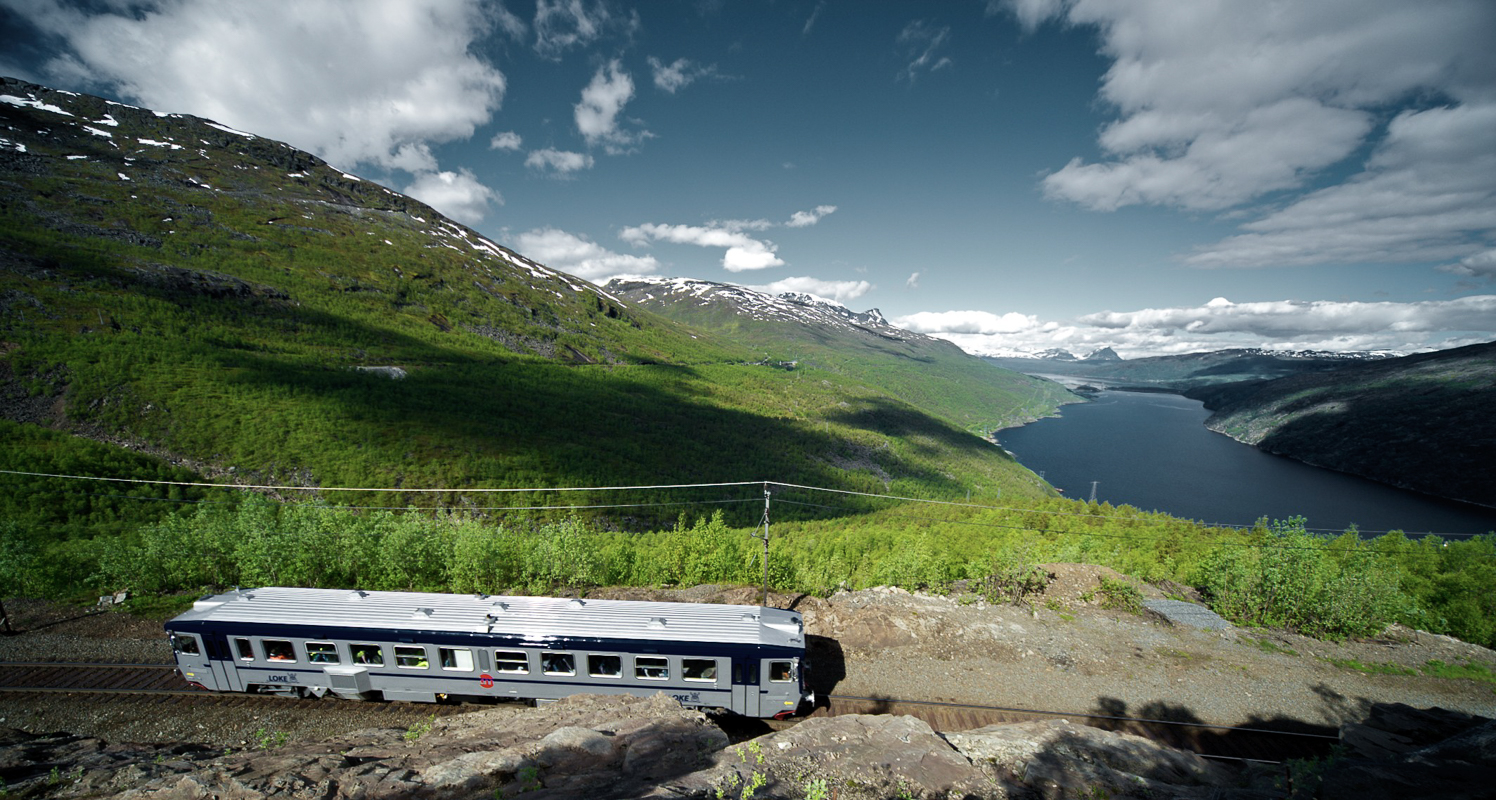A 42km train journey from Narvik to the Swedish border takes you from fjord to mountain through a wild, dramatic, uninhabited landscape. The story of the building of the railway and the events of WWII form an equally dramatic backdrop.
The 42-km (26-mile) long Ofotbanen railway has no connection with the rest of the Norwegian railway network. But the railway does cross the Swedish border, going all the way to Kiruna, and from there connects with the Swedish railway network. One curve on the track just after leaving Narvik is the most northerly point on the Western European standard gauge railway network. So from Narvik you can take a train to virtually anywhere you want to go in Europe. Or you can take the train up to the Swedish border and back and experience the great variety of the landscape and the magnificent scenery.
From summer to spring to winter
Our journalist took the train trip in mid-June, the sun was peeking over a lush, early-summer fjord landscape as we left Narvik. Travelling along the Rombakfjord the track rises high above the fjord, offering magnificent views of the snow-clad mountains. In the waters far below we glimpse the rust-covered wreck of a German destroyer sunk in the Battle of Narvik in 1940. As we move up the Hundalen valley the track makes a great sweeping curve in the valley side, and we can see only jagged peaks, deep valleys and green forests. Finally, we reach the high mountains, where willow thickets and dwarf birch cluster among huge boulders and large patches of snow. At Vassijaure, just across the Swedish border, we change trains and go back down the way we came, passing from winter, to spring, to summer.
Stations
The stations along the Ofotbanen railway are in stark contrast to the wild landscape. Neat and elegant, the stations were designed by the railway’s own architects. We glide slowly past the restored old water tower at Rombak station, and make a brief stop at Katterat with its red-painted station building. Here there are also lawns and gardens from the days when the railway had its own gardeners. Katterat was one of the stations where there were points systems enabling the trains to change tracks. After automatically controlled points were introduced, there was no longer any need for a permanent settlement at Katterat.
The iron-ore railway
The Ofotbanen railway and the towns of Narvik, Kiruna and Gällivarre owe their existence to just one thing ‒ iron ore. The rich mineral deposits in Northern Sweden had long been known, but transporting heavy iron ore across the mountains by reindeer-drawn sled was deemed too difficult and risky. However, with the advent of steam locomotives came the idea to lay a railway track from the iron ore mines in Sweden right down to the ice-free Norwegian coast. The northern Swedish ports on the Bottenvika coast are of course closed by ice in the winter.
English start and Norwegian-Swedish completion
In 1884, an English company started the enormously demanding task of building the railway. The Arctic climate and rugged terrain presented many unexpected and great challenges, and in 1889 the company went bankrupt. The project was abandoned, until 1898, when the Swedish and Norwegian parliaments decided to complete it as a state-sponsored venture. On 15 November 1902, the first iron ore train went from Kiruna to Narvik.
The navvies build the railway
In five years the railway was built and the port of Narvik established. The backbreaking work was done by migrant labourers or “rallare” (navvies). The navvies came from both Sweden and Norway, and over the course of five hectic years, they turned the remote little rural communities in innermost Ofoten upside down. There was an end to rural tranquillity, but there was also money to be made by everyone in this Klondyke-like boom. The navvy played the same role as the cowboy on the prairies, a pioneer and adventurer people could identify with.
War along the railway
During World War II, it was important for the Third Reich to control the iron-ore railway, the only way of exporting Europe’s largest and most important iron ore deposits. For the Allies it was equally important to stop the supply. And so much of the fighting in the Battles of Narvik went on along the railway line. There was an attempt by the Norwegians to blow up the Norddalsbrua bridge at the top of the Hundalen valley, but because of ice in the chambers where the explosives were placed, the explosion was not that great and the bridge was easily repaired by the Germans. On 28 May 1940 the Allies re-captured Narvik and blew up the docks from which the iron ore was shipped. By early June 1940 the Germans could only maintain a pocket of resistance entrenched at Bjørnfjell station.
In grand style
While there is only modest passenger traffic on today’s Ofotbanen railway, the volumes of iron ore shipped by rail are enormous. This is the only track in Europe with an axle load of 30 tonnes. The world’s most powerful electric locomotives pull 68 wagons, each containing 100 tonnes of iron ore. Ten of these trains a day carry enough iron ore to manufacture 70,000 cars! When the heavily laden trains brake on the approach to Narvik, they produce 3.500 kwh of electricity, enough to power an empty train all the way back to the Swedish border at Riksgränsen! The axle load on the Ofotbanen railway is as great as that on the heavily trafficked road tunnel system beneath the harbour in Oslo! The iron ore from Kiruna accounts for 60% of the weight of all Norwegian imports by rail! The statistics on the Ofotbanen railway are truly staggering…
The new navvy era
In recent years the powerful economic growth in Asia and the resulting high price of commodities has brought a new renaissance to mining in Nordkalotten (the Cap of the North). The old mining company LKAB will increase its capacity considerably in the coming years, and the Canadian mining company Northland started exporting iron ore from Narvik in 2013. The Ofotbanen line is not primarily a railway for tourists, but vital for sustaining many jobs in three countries.

Interested in visiting the railway?
Visit Narvik will help you out with all the details you need
